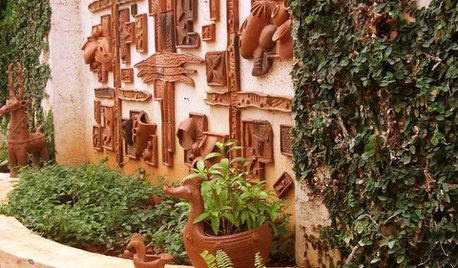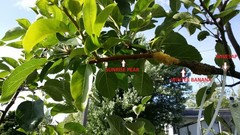My Apple Tree is Girdled - Help!
Sunrise Vineyards
14 years ago
Featured Answer
Sort by:Oldest
Comments (8)
mensplace
14 years agofruitnut Z7 4500ft SW TX
14 years agoRelated Professionals
West Milford Landscape Architects & Landscape Designers · Cary Landscape Architects & Landscape Designers · Manchester Landscape Contractors · Aberdeen Landscape Contractors · Americus Landscape Contractors · Concord Landscape Contractors · Fishers Landscape Contractors · Hicksville Landscape Contractors · Louisville Landscape Contractors · Miller Place Landscape Contractors · Oxnard Landscape Contractors · Pacifica Landscape Contractors · Watertown Landscape Contractors · North Hills Landscape Contractors · Clearfield Landscape Contractorsmilehighgirl
14 years agobberry_gw
14 years agoSunriseSaloon_aol_com
13 years agoSunrise Vineyards
9 years agoSunrise Vineyards
9 years ago
Related Stories

EDIBLE GARDENSHow to Add an Apple Tree to Your Edible Garden
Readily available, beautiful and fragrant, apple trees offer four-season interest along with crisp, juicy fruit
Full Story
PRODUCT PICKSGuest Picks: Help Your Home Blossom With Floral Decor
Sprinkle hints of spring around your rooms with fabrics, wall coverings and more that recall nature's charms
Full Story
DECORATING GUIDESSlow Design: Today's 'Wabi-Sabi' Helps Us Savor the Moment
Learn about the design movement that's aiming to satisfy our real needs, leaving materialism in the past
Full Story
PETSHow to Help Your Dog Be a Good Neighbor
Good fences certainly help, but be sure to introduce your pup to the neighbors and check in from time to time
Full Story
LIFE12 House-Hunting Tips to Help You Make the Right Choice
Stay organized and focused on your quest for a new home, to make the search easier and avoid surprises later
Full Story
PETS6 Ways to Help Your Dog and Landscape Play Nicely Together
Keep your prized plantings intact and your dog happy too, with this wisdom from an expert gardener and dog guardian
Full Story
ORGANIZINGHelp for Whittling Down the Photo Pile
Consider these 6 points your personal pare-down assistant, making organizing your photo collection easier
Full Story
SELLING YOUR HOUSE10 Low-Cost Tweaks to Help Your Home Sell
Put these inexpensive but invaluable fixes on your to-do list before you put your home on the market
Full Story
HOUZZ TOURSMy Houzz: Saturated Colors Help a 1920s Fixer-Upper Flourish
Bright paint and cheerful patterns give this Spanish-style Los Angeles home a thriving new personality
Full Story
GARDENING GUIDESTree Care: Common Tree Diseases and What to Do About Them
Learn to recognize trees that may be affected by diseases or pests so you can quickly take action
Full Story









appleseed70